The power grid is changing. Utilities have begun to decentralize and digitize to meet high-reliability metrics and minimize outage times when faults do occur,
By decentralizing power distribution networks into smaller grids, you can better detect and isolate faults within specific areas. Power can then be rerouted from adjacent circuits to restore service to customers quickly.
But to enable these advanced functions, you need digitized real-time data from line sensors and smart controllers on re-closers and switches, reliably relayed between devices and to your central distribution and outage management systems. That’s why you need Rajant Kinetic Mesh®—the only network designed to work like the power distribution grid itself.
Rajant’s distributed architecture makes it the logical way to deploy and manage grid communications because the network’s communications links can follow the same path the power takes. Let’s compare how.
Until now, point-to-multipoint radios were the only option for grid communications and control. In this network, connections are beamed long distances from a central base to remote grid devices. Buildings, trees, and topographical variations can cause some connections to be better than others. More access points and infrastructure are the only way to work around these obstructions. What’s more, if the base node goes down, so does the whole network—leaving the command center ‘in the dark’ with no visibility into how the grid is operating, and without the communications needed for grid optimization processes.
Kinetic Mesh, on the other hand, works by distributing ruggedized BreadCrumb® nodes across substations and alongside line sensors, re-closers, and switches. These nodes communicate peer-to-peer and can send data in any direction over their meshed links.
Rajant’s InstaMesh® networking software continuously orchestrates traffic via the fastest paths to ensure reliable delivery to the command center. It doesn’t need extensive infrastructure to easily find its way around buildings, trees, and hills. If faced with interference or a node outage in a certain area, the network will dynamically reroute communications over the next-best available path—just like the grid does with power—to maintain mission-critical performance.
Multiple links create high capacity, and because BreadCrumbs can be deployed virtually anywhere, the network can follow your grid pattern down to the street level.
Now, no matter the conditions, you have the fault-tolerant network reliability to gather data from pole and line sensors rapidly, and real-time connectivity to execute advanced fault detection, isolation, and restoration. Our BreadCrumbs can even act as Wi-Fi hotspots for dispatched crews to pull up repair orders and maps en route to or at the scene of a fault.
Rajant enables you to optimize your decentralized, digitized power grid with an equally distributed, peer-to-peer, high-capacity network, and to reach your goal of reliable and continuous power delivery to your entire customer base.
Click here to watch the video that illustrates how this is accomplished. 🖉












